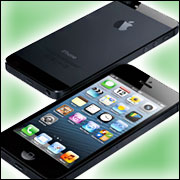
Last week at Intel’s Developer Forum, I was on a panel of folks — led by renowned futurist Briand DavidJohnson — who are trying to make sure future products are better at taking into account the people they aredesigned for.
This purpose was connected to one of the major points made by Dr. Genevieve Bell: that weshould take the trouble to understand what assumptions were made by the designers of a product weintend to buy. She told a troubling story about how many Canadian drivers think U.S. car makers wantto kill them, because they buy cars designed for U.S. men.
If you look at the new iPhone, it was clearlydesigned with a person in mind — which can be an issue with a one-size-fits-all company — and I’m willing tobet that person isn’t you, and that it might be Steve Jobs’ wife.
I’ll close with an accessory that you can use with your smartphone or smallcamera to put yourself back in your pictures.
Canadian Driver Example
The example Dr. Bell cited: U.S. car makers had to assume drivers likely weren’t wearingtheir seatbelts and were 180-pluls pounds in weight. The result was an aggressive airbag system thathad to stop an untethered, large body. Canadians tend to be lighter and their seatbelt lawsare more rigorous, so they are buckled up. The end result is that when an air bag goes off, it tends tohit Canadians far harder and generally breaks noses or causes more extreme facial damage. (I expectthe same thing actually happens to the U.S. driver without a seatbelt, but we explain it away by saying itresulted because they weren’t properly restrained.)
Her point was that if Canadians — and women, come to think of it — knew that U.S. cars weredesigned specifically for large men who didn’t buckle up, they’d likely avoid those cars,forcing U.S. car makers to change their policy. It would also likely result in fewer broken noses andblackened eyes.
The lasting point in all of this is that if we took the time to understand for whom a product was built,we’d likely pick more products we liked and fewer we found disappointing.
iPhone 5
There are three things that stand out as unique in the iPhone 5 that would appear to target a specificbuyer. The screen is long and thin, favoring smaller hands. The case is “jewel like.” While one ofthe most beautiful, it is also the most fragile — very much like jewelry. Finally, the focus of the screen is ondetail — much like jewelry — rather than on stunning color, as is the case with the raft of Super AMOLED screens.
If you look at the difference between a typical male and female buyer, you’ll likely see that women havesmaller hands, prefer things that are more delicate, and tend to be more interested in consistency.Guys like things that are big (size matters), they have larger hands, and trend to louder colors (ever seen a golf outfit?). In many cases, men wouldn’t know fashion if it beat them over the head with a stick.
Now when it comes to age, adults typically take better care of things than children do, because kidsgenerally don’t understand the cost of replacement. Most seem to think that money appears magically andthat the reason they don’t have everything they want is that their parents have a mean streak.
Kidsalso have poor judgment, so giving them a screen phone that requires attention would undoubtedlyincrease their risk of injury — particularly if they drive. Apple developers have kids, so had they used kidsas a target — either male or female — they’d have likely created something far different. No responsibleparent wants to put a child at an avoidable risk.
The end result is that the ideal buyer the iPhone 5 appears to be designed for is an older (30-plus), affluent woman. This doesn’t mean that other buyers won’t enjoy the phone — but they might prefera phone better designed for their own demographic. I expect a lot of parents would prefer their kids carryphones less likely to contribute to an accident than an iPhone.
Given Steve Jobs’ recent passing, it isn’t hard to imagine that Apple developers might have intentionally designed this iPhone to honor his widow. It is a nice thought — though the influence also could have come from anywoman on the design team or even someone’s wife, girlfriend or partner.
Wrapping Up: I Want a Phone Built for a Man
The big takeaway for me is that if we spent more time figuring out ourunique needs and priorities and then thought about what an idealproduct set might look like, rather than just lining up for the latest “it” products, then we’d all likely makewiser decisions. I also think the result would be more products designed for unique sets of needs.
I’m as open minded as the next guy, but I’d prefer a phone built for a guy — say like thisSonyXperia T that comes loaded with the James Bond movie Skyfall, or one of these Steampunk phones, or maybe this extreme smartphone that






















































Is there any award for this?
Damn right, it’s good to be very rich!!!
Hey Rob
iPhone 5 tops 2 million preorders in 24 hours. Mrs Jobs went shopping!